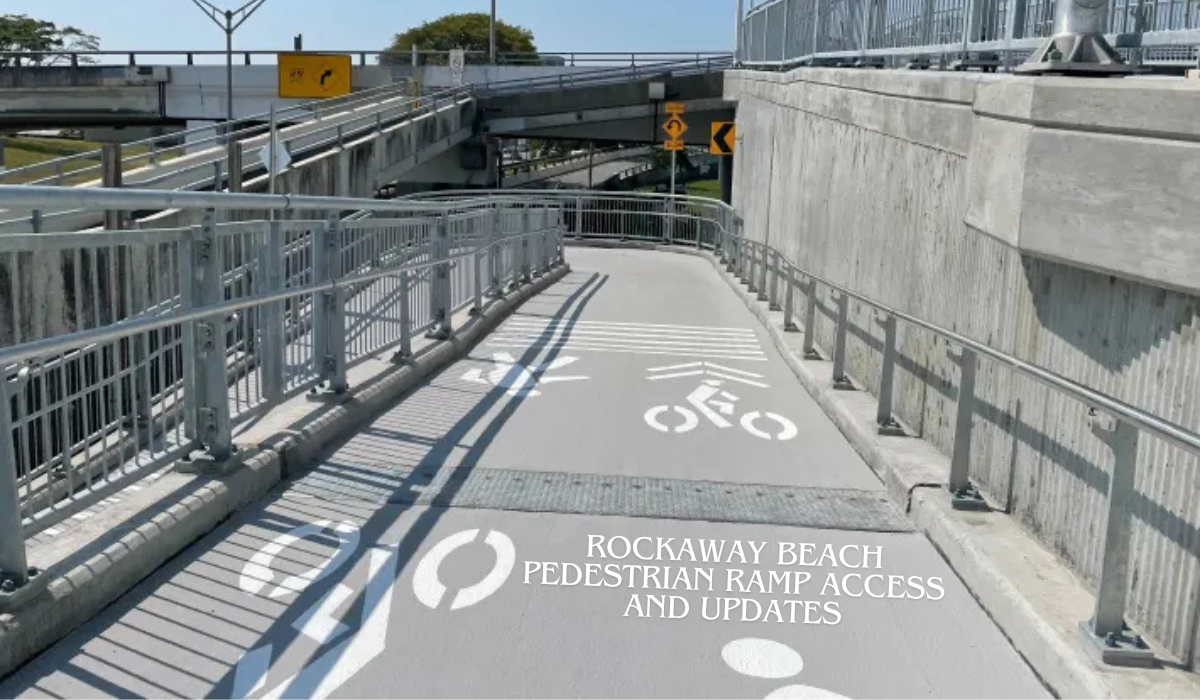Nestled along the vibrant coastline of Queens, New York, Rockaway Beach is one of the city’s most beloved summer destinations. At the heart of this coastal retreat lies the Rockaway Beach pedestrian ramp, an essential access point connecting beachgoers to the shoreline and boardwalk. However, this ramp is more than just a functional pathway – it serves as a symbol of inclusivity, resilience, and community spirit.
Join us as we walk through the history, significance, and future of the Rockaway Beach pedestrian ramp, highlighting the ways it brings people together while shaping a more accessible and welcoming environment for everyone.
The Ramp’s History and its Role in the Community
Originally constructed as a simple means to reach the beach, the Rockaway Beach pedestrian ramp has grown to symbolize much more. Over the decades, it has become a natural gathering place for locals and tourists alike, bringing together diverse groups to enjoy the beauty of the coastline.
For older generations and individuals with disabilities, the ramp has been particularly impactful, allowing easy access to the waves, fresh sea breeze, and scenic boardwalk. Beyond functionality, the ramp also anchors community events, with summer festivals, markets, and celebrations often originating near this gateway.
The ramp holds deep cultural meaning for the neighborhood as well. It represents Rockaway’s ongoing commitment to inclusivity, ensuring no one is excluded from enjoying its sandy shores, regardless of physical ability.
Enhancements and Ongoing Projects to Improve Access
Maintaining and improving the Rockaway Beach pedestrian ramp has become a priority to meet the growing needs of the community. Several key projects have been launched to enhance accessibility, visibility, and safety.
Key Improvement Projects
- Beach 24th and 25th Streets Ramps
Construction is underway to create new ramps at Beach 24th and 25th Streets, providing smoother and safer access points to the shore and boardwalk.
- Beach 108th Street ADA Improvements
This project includes the installation of ADA-compliant pedestrian ramps, extended curbs for safer crossings, and increased visibility for all visitors.
- Wayside Beach Access and Accessibility Enhancements
New, accessible entryways featuring concrete stair and ramp systems, ADA parking spots, and other accessibility features ensure a seamless experience for all beach lovers.
Beyond these large-scale initiatives, there are smaller updates that cumulatively make a big difference. These include:
- Pedestrian Ramps at Intersections: Redesigned intersections now feature accessible curb ramps for smoother transitions.
- Expanded Curbs and Medians: These improvements shorten crossing distances, enhancing safety for pedestrians.
- Refurbished Markings: Clearer road and pathway markings guide traffic flow and improve navigation.
Together, these projects not only update the ramp but also transform the surrounding area into a more inclusive and enjoyable space.
Importance of Accessibility in Urban Design
The enhancements to the Rockaway Beach pedestrian ramp and surrounding spaces underscore one of the most pressing priorities in urban planning today – accessibility. Here’s why accessible infrastructure is essential:
- Promotes Inclusivity: Everyone has the right to enjoy public spaces. ADA-compliant ramps and pathways ensure access for all, regardless of mobility challenges.
- Improves Safety: Features such as better lighting and shorter crossings reduce risks for all individuals, including children and seniors.
- Encourages Tourism: Easier access attracts more visitors, including families and elderly travelers, boosting local businesses and the economy.
By investing in projects like the pedestrian ramp, Rockaway Beach sets an example for other communities nationwide, proving that inclusion and innovation can go hand-in-hand.
Challenges in Maintaining and Upgrading the Ramp
Although the ramp plays a vital role in the community, it faces several challenges that complicate maintenance and improvements.
- Harsh Coastal Conditions
Being close to the ocean makes the ramp susceptible to saltwater corrosion and unpredictable weather, including storms and hurricanes. These factors accelerate wear and tear, requiring frequent repairs.
- Heavy Foot Traffic
During peak summer months, the ramp experiences high volumes of visitors, further straining its structure. This kind of extensive use can lead to cracking, erosion, and other maintenance concerns.
- Funding and Bureaucratic Delays
Limited resources and complex permitting processes make it difficult to complete repairs or implement enhancements quickly. This causes delays that affect the ramp’s reliability during critical times for beach tourism.
Community efforts, detailed below, aim to address these obstacles through collaborative action and creative solutions.
Rallying the Community for Preservation Efforts
The people of Rockaway Beach have always been passionate about preserving their local treasures, especially the pedestrian ramp. Community-driven efforts are a testament to their dedication and creativity.
Local Initiatives Supporting the Ramp
- Fundraising Campaigns
Charity runs, bake sales, and beach clean-ups have raised significant funds to contribute toward ramp upgrades.
- Social Media Advocacy
Platforms like Instagram and Facebook help spread awareness, with viral campaigns driving broader participation from outsiders and residents alike.
- Business and Organizational Grants
Partnerships with local businesses and environmental organizations provide both monetary support and expertise to execute projects.
These efforts ensure that the ramp remains functional and inviting, reinforcing its role as a cherished community hub.
Creating a Better Future for All Beach Visitors
Looking ahead, the vision for the Rockaway Beach pedestrian ramp includes transforming it into a state-of-the-art gateway that not only ensures accessibility but also enriches the visitor experience.
Exciting Plans for Modernization
- Adding handrails, wider paths, and upgraded drainage to improve safety and ease of access.
- Incorporating green spaces, shaded areas, and benches along the ramp for comfort and relaxation.
- Enhancing aesthetics with modern materials and native plants, making the ramp blend into the natural surroundings.
- Installing informational signage about Rockaway’s history, marine wildlife, and conservation efforts for an educational twist.
These improvements will benefit diverse visitor groups, from families with young children to seniors, individuals with disabilities, and out-of-town tourists.
Protecting Rockaway’s Legacy of Inclusion
The Rockaway Beach pedestrian ramp is more than an access point; it’s a lifeline connecting people to the ocean, history, and each other. Its preservation and modernization are vital for ensuring that this treasured destination continues to thrive, drawing visitors with its charm and inclusivity.
By supporting ongoing improvement efforts and using the ramp responsibly, we can all play a part in safeguarding Rockaway Beach’s legacy for the next generation of beachgoers. After all, a more inclusive beach is a better beach.
Frequently Asked Questions (FAQs) About the Pedestrian Ramp
1. Is the Rockaway Beach pedestrian ramp ADA-compliant?
Yes! The ramp and ongoing improvement projects ensure compliance with ADA guidelines to provide a seamless experience for all visitors.
2. How can I contribute to ramp improvement efforts?
You can participate in fundraising events, volunteer for community initiatives, or support local businesses that contribute to these projects.
3. When are the new ramps expected to be completed?
Improvements at Beach 24th, 25th, and 108th Streets are targeted for completion by the next summer season. Stay updated through official city or community announcements.
4. Are there parking options near the ramp?
Yes, ADA-compliant parking spaces are part of the planned improvements, ensuring easy access for all.
5. Can I bring my pet to the beach via the ramp?
Yes, well-behaved pets on leashes are welcome in designated areas. Be sure to check local guidelines about pet-friendly zones.

